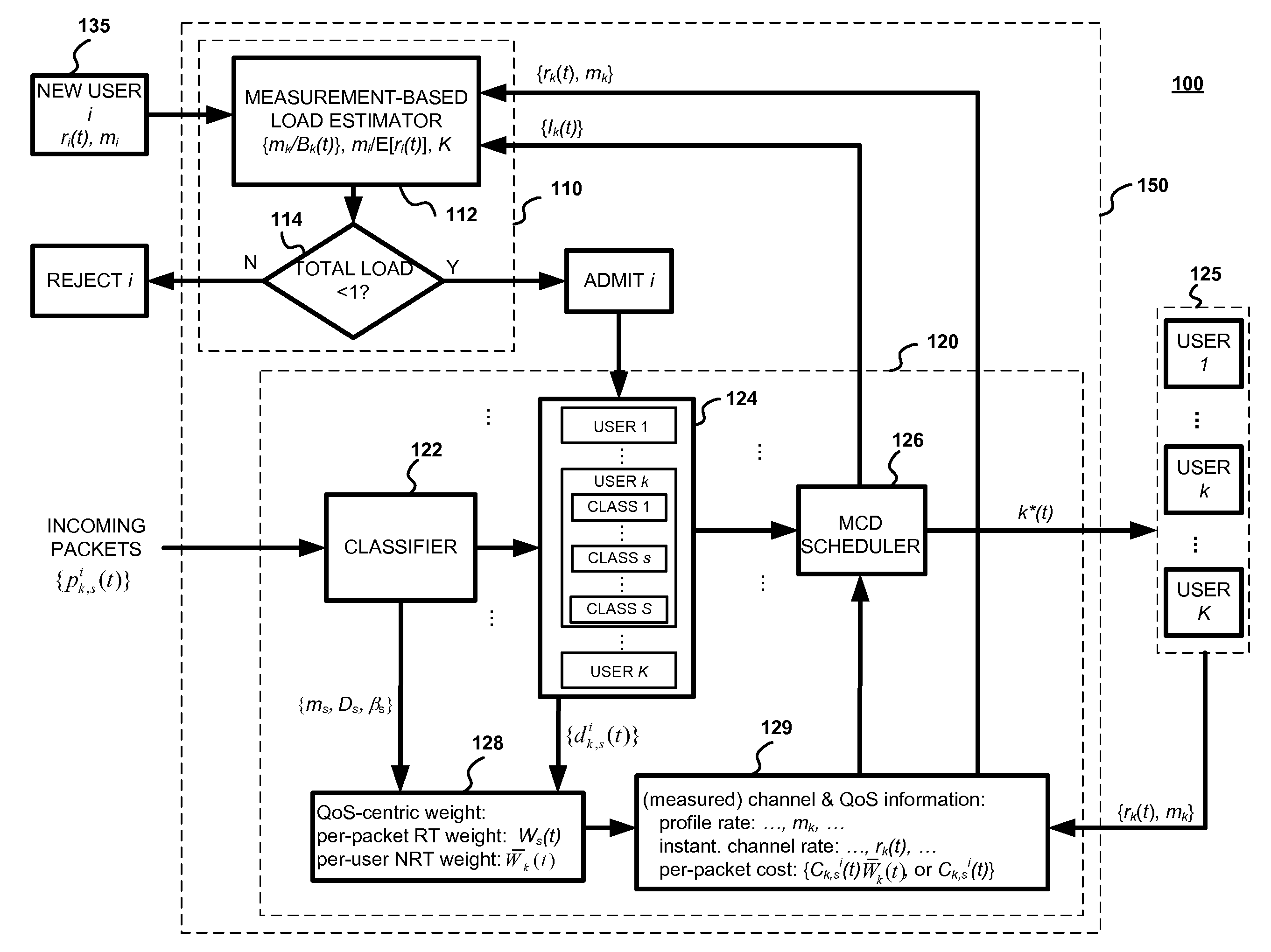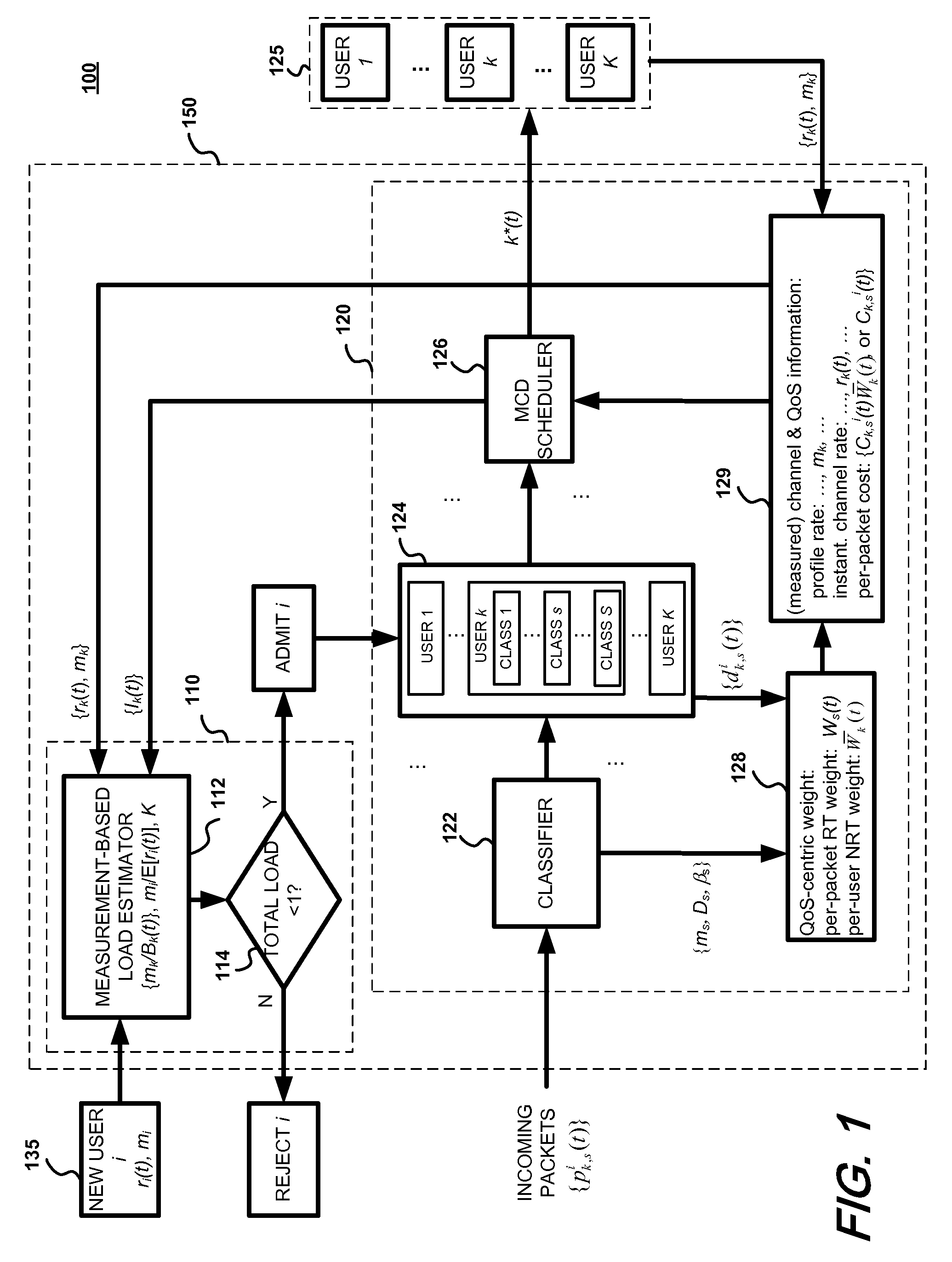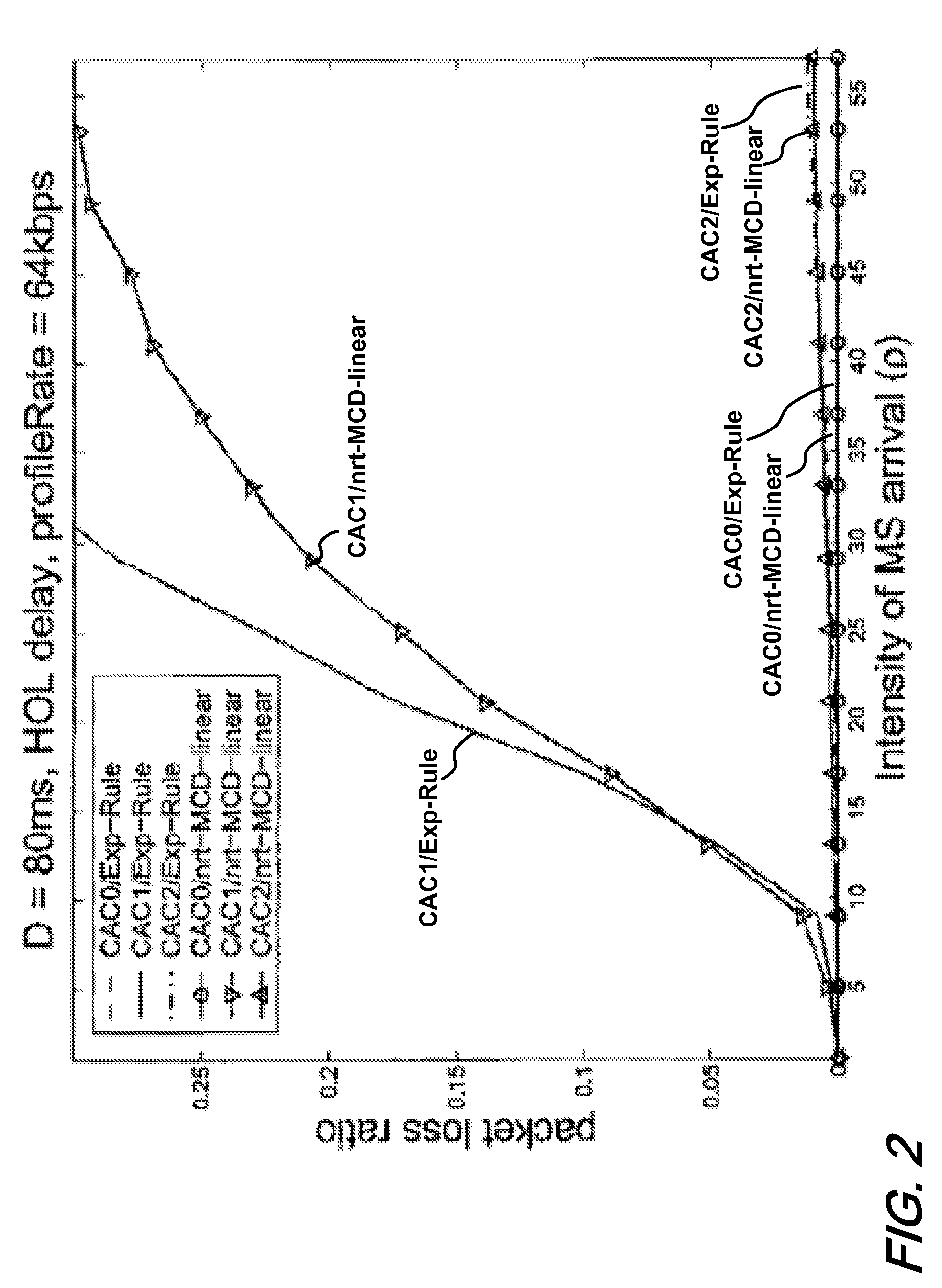Measurement-Based Admission Control For Wireless Packet Data Services
a wireless packet data and admission control technology, applied in data switching networks, instruments, frequency-division multiplexes, etc., can solve the problems of low efficiency in the cellular environment, not necessarily optimal, and few real-time scheduling algorithms designed specifically for shared-channel cellular systems
- Summary
- Abstract
- Description
- Claims
- Application Information
AI Technical Summary
Benefits of technology
Problems solved by technology
Method used
Image
Examples
Embodiment Construction
[0017] Several performance metrics will be referred to herein in describing the present invention. “Per-user goodput” refers to the transmission rate of real-time packets delivered successfully before their deadline. Conversely, the loss rate of real-time packets refers to the percentage of packets dropped at the base station due to deadline—expiration or delay violation. The mean delay and jitter of successfully delivered real-time packets are also relevant metrics. The per-user goodput and mean delay and jitter metrics can also be measured for all users in aggregation to reflect overall system performance.
[0018] Another metric is the call blocking rate for users dynamically arriving at randomly distributed locations in a cell. From the system's point of view, this metric also reflects the maximum number of admissible users under the system's packet-level quality-of-service (QoS) constraints. The performance fairness of multiple real-time users, i.e., how the goodputs of users adm...
PUM
 Login to View More
Login to View More Abstract
Description
Claims
Application Information
 Login to View More
Login to View More - R&D
- Intellectual Property
- Life Sciences
- Materials
- Tech Scout
- Unparalleled Data Quality
- Higher Quality Content
- 60% Fewer Hallucinations
Browse by: Latest US Patents, China's latest patents, Technical Efficacy Thesaurus, Application Domain, Technology Topic, Popular Technical Reports.
© 2025 PatSnap. All rights reserved.Legal|Privacy policy|Modern Slavery Act Transparency Statement|Sitemap|About US| Contact US: help@patsnap.com



